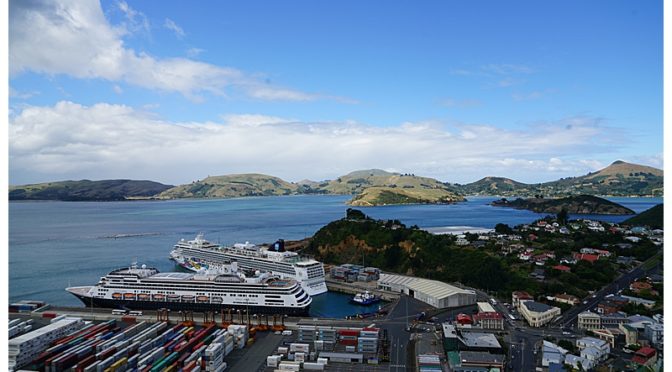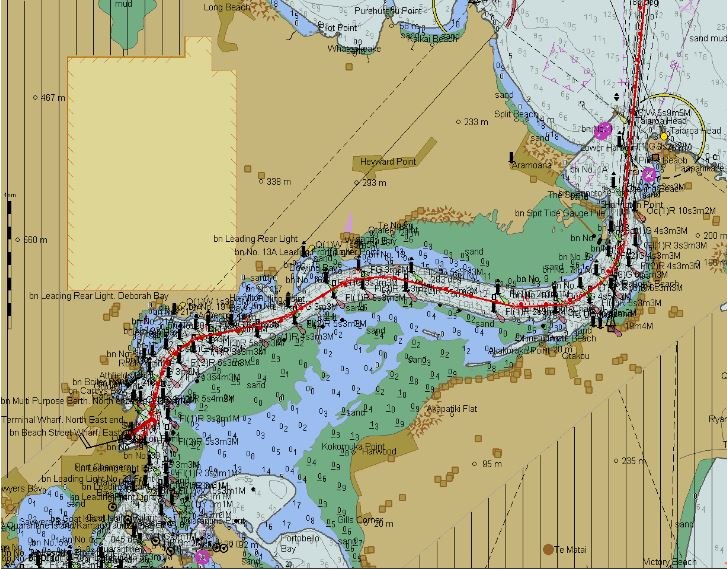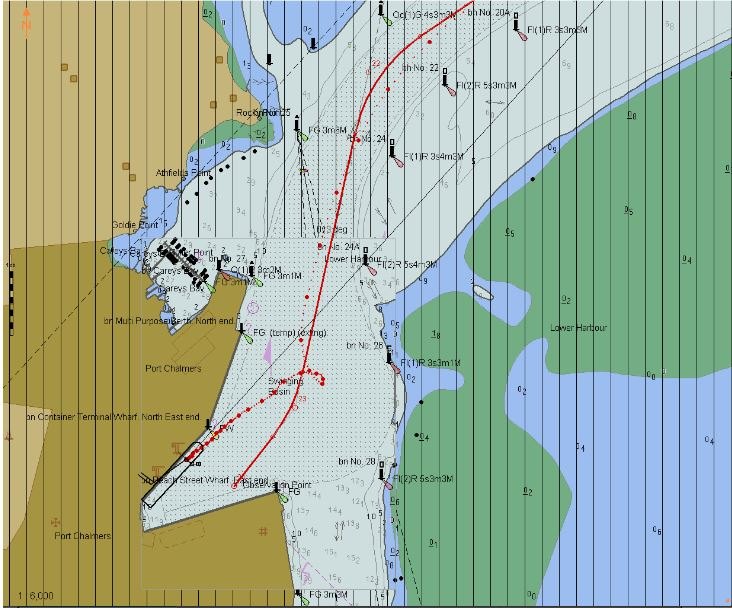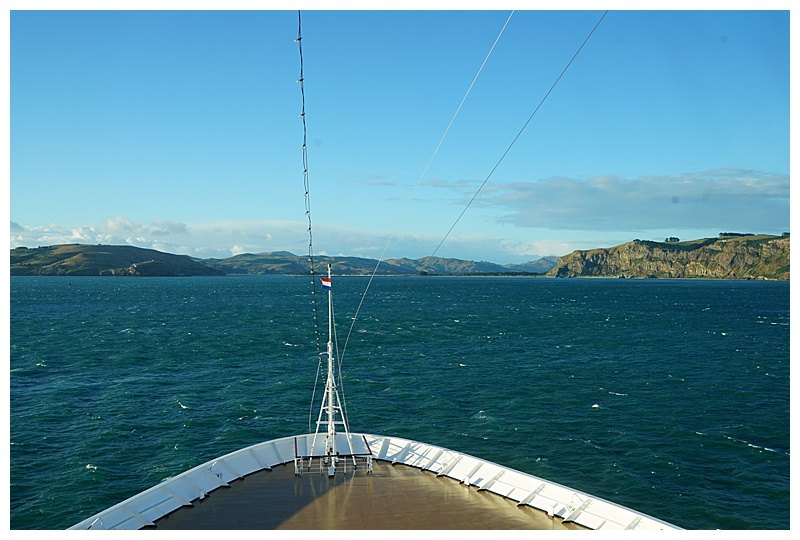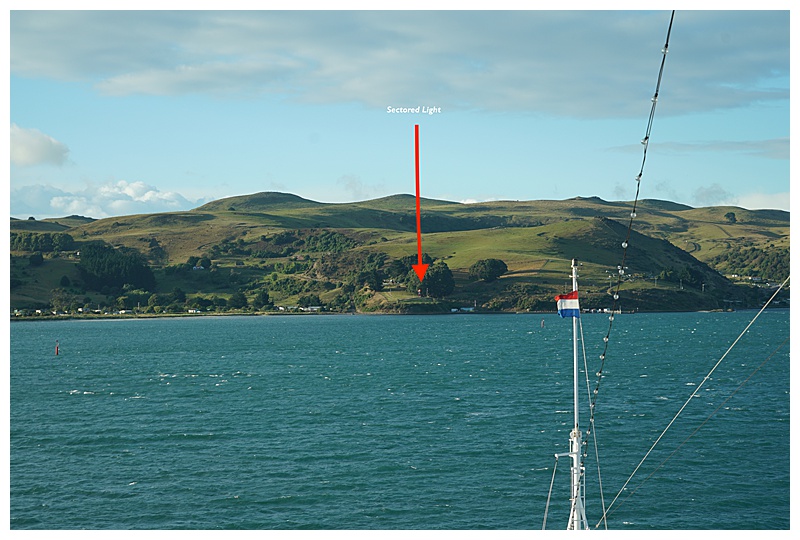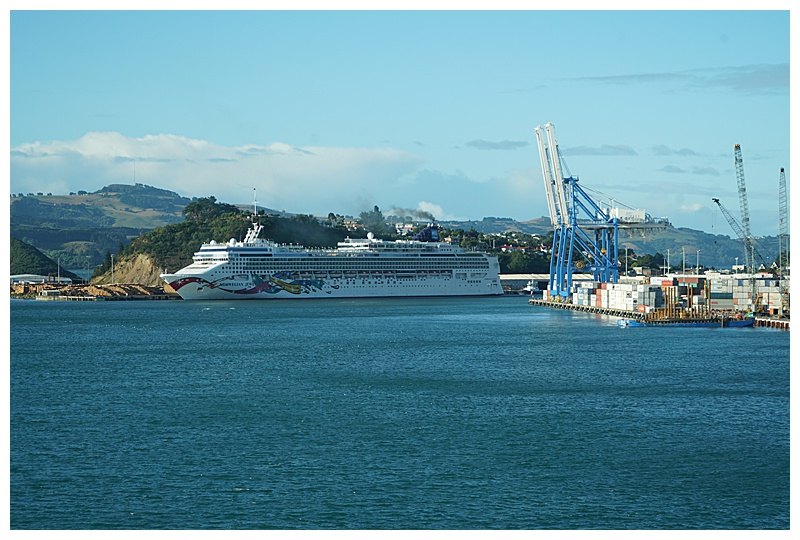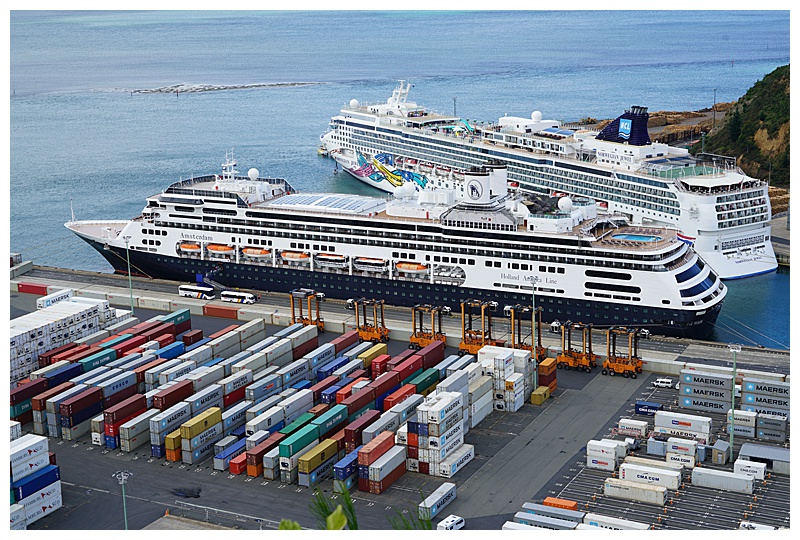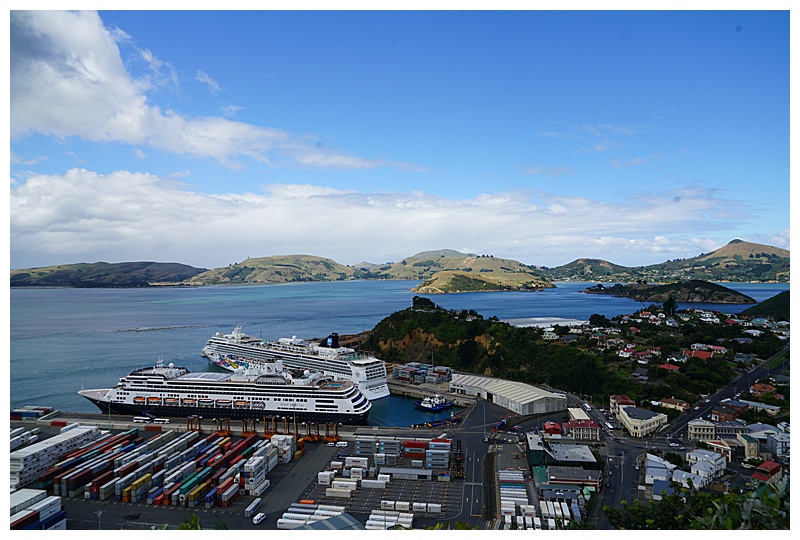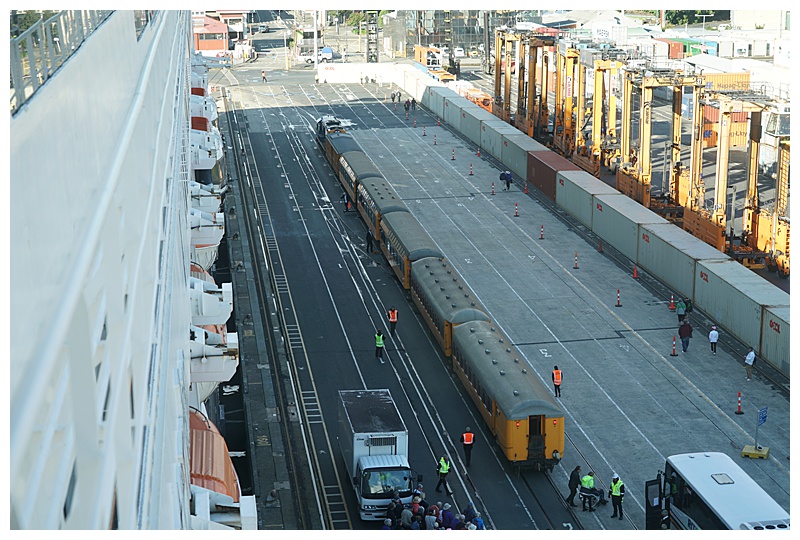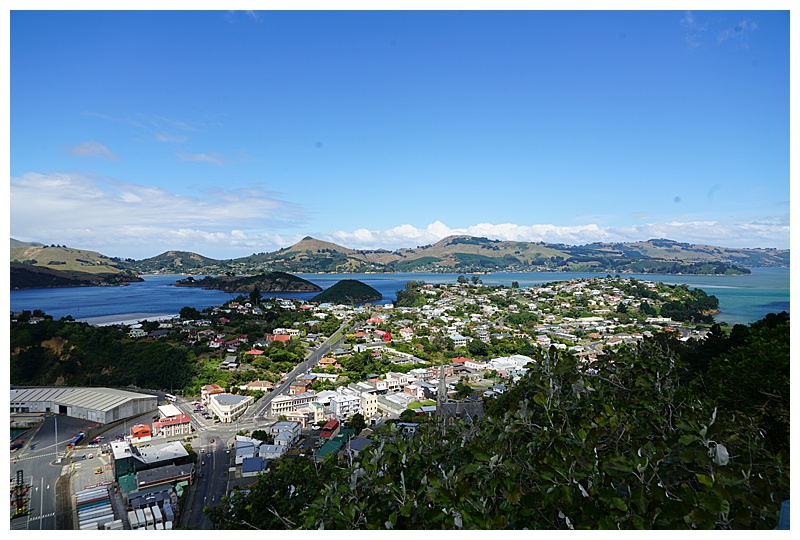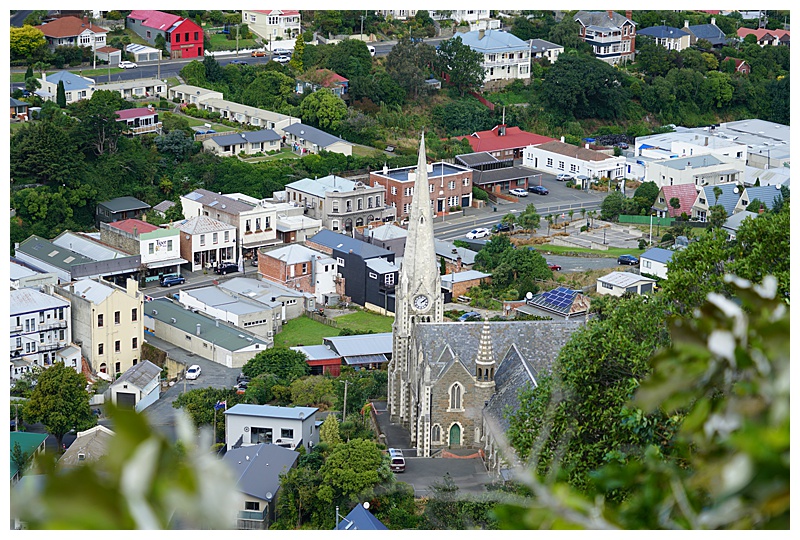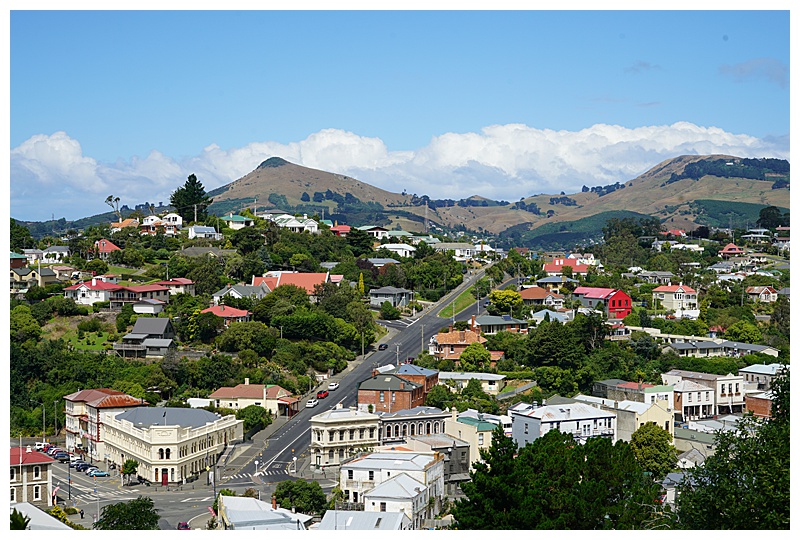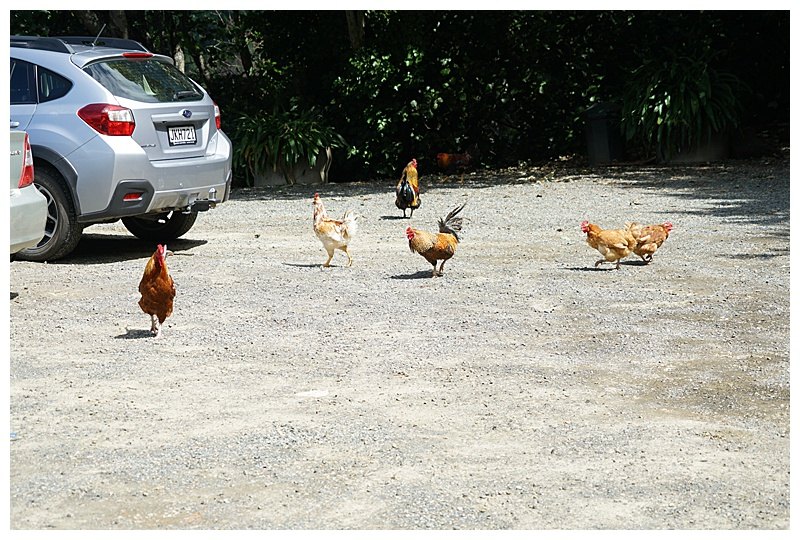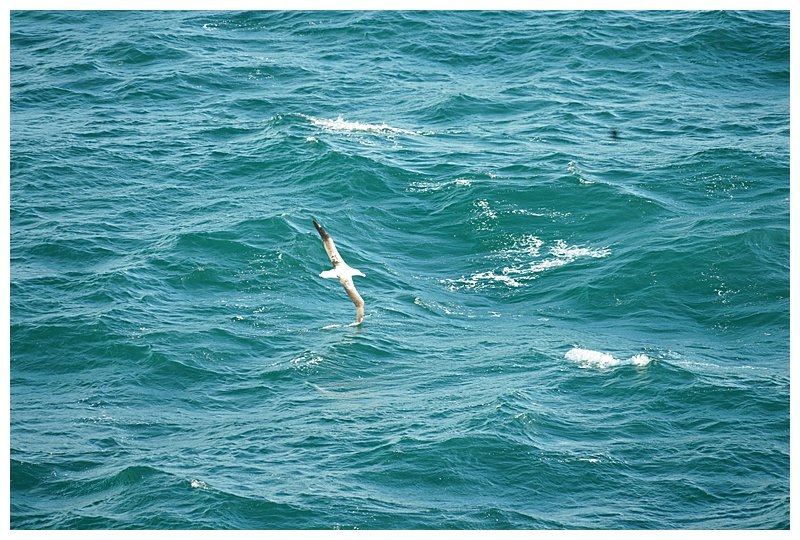We had planned for an 0630 pilot this morning. Coffee in-hand I opened the Bridge door and I knew, by the pressure needed to open it that it was windy. Sure enough, foaming white-caps could be seen in the dim light, the wind howling off the rectangular bridge-wings. Our anemometer was renewed while we were docked in Auckland, (the old one having worn out 😉 ), the red numbers on the new one indicating 45 knots, 50 mph, 80 kph. Hmnn, not the best of weather for a port that has a long, winding approach channel with no room to abort once one is in it.
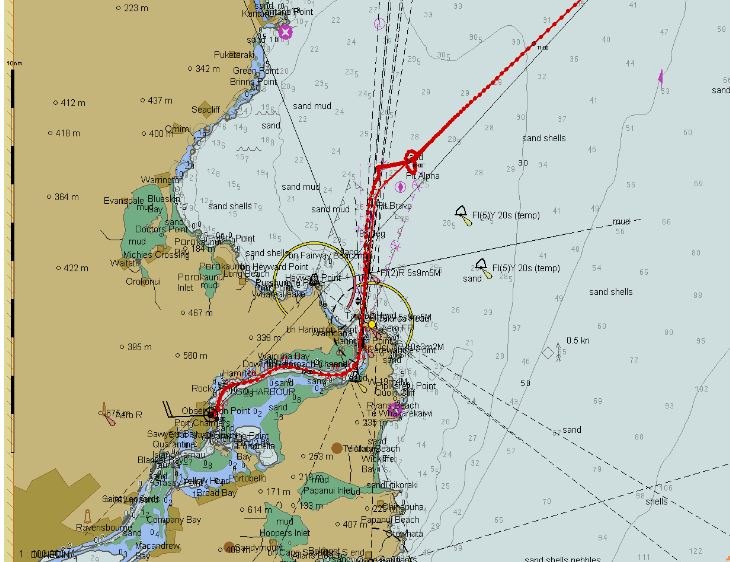
An overview of the approach and the channel to the port, the ‘kink’ in the track to the north is our 360 degree turn and the wait outside.
Radio reports from Harbour Control indicate a slight decrease in the small harbour, 25-30 knots, just at the top end of our parameters. Ahead of us, the “Norwegian Jewel”, also planning to dock. The pilot boat comes out, spray flying from its bow, almost lost in the swell; she goes to the “Jewel” first and she has to turn to provide a lee for the pilot to board. Us next and we too turn to provide a lee and once the pilot is on, we continue to turn, a 360° in fact. We ‘hove to’, pointing into the wind and sea and doing 3 knots while I and the Bridge team have a long discussion about the ‘plan’ with the pilot. I am not willing to enter until I know that the “Jewel” is not going to abort, or have challenges, so we sit there, slowly making way while we watch on radar, (we are unable to visually see her behind the headland), the progress of the “Jewel” in the channel. She reaches a point where we are pretty sure she’s going to make it, so we pick up speed, 12 knots and allowing for the ‘drift’, (the effect of the strong wind on the ship’s side). Onto the sectored ‘leading’ light and then a sharp turn to starboard, the wind still high. We weave down the channel, sandbanks to port and starboard. Near the port, a lone tug comes to join us, standing-by in case we need some help. (It being ‘Waitangi Day’, a national holiday, the other tug was not available).
Into the turning basin and a swing to port, (Thomas, my 2nd-in-command had been designated to manoeuvre at our planning stage). The wind has decreased to 25-30 knots and on our port quarter, just manageable and no need for the tug to assist Then astern towards the dock, all the while correcting to stop the effect of the wind trying to push us off the berth. Nice job Thomas and 50 minutes later than scheduled we were all fast.
It’s been blowing all day, to get out of here, all we have to do is let go our lines and we’ll sail out…..Just joking! 😉 Karen and Hazel are off on a sight-seeing tour and I, having sat at my desk for far too long, got a ride from the agent, who took me for a whistle-stop, 20 minute tour for some photographs.
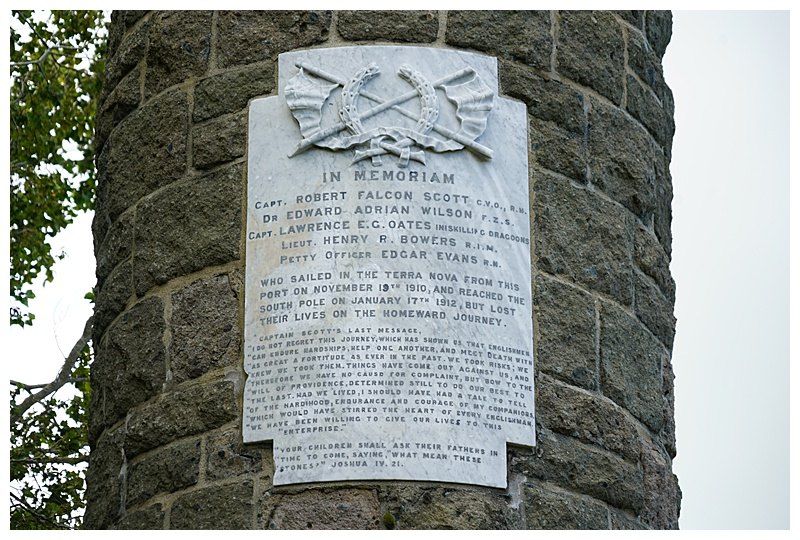
A memorial to Scott and his compatriots, who left Port Chalmers in an attempt to reach the South Pole and never made it back.
We leave on schedule, the “Jewel” having left 2 hours before us, so room to get off the dock and get some speed before reaching the windier section of the channel. At the seaward end lies the only mainland rookery of the Albatross, magnificent ‘Wanderers’ of the sea, a wing span of 3 metres, they glide for days over the southern oceans. Sailor’s lore is that it is good luck to have an Albatross following one’s ship, they are souls of dead sailors, watching over you. Over my years at sea I have had seen many of these beautiful birds.
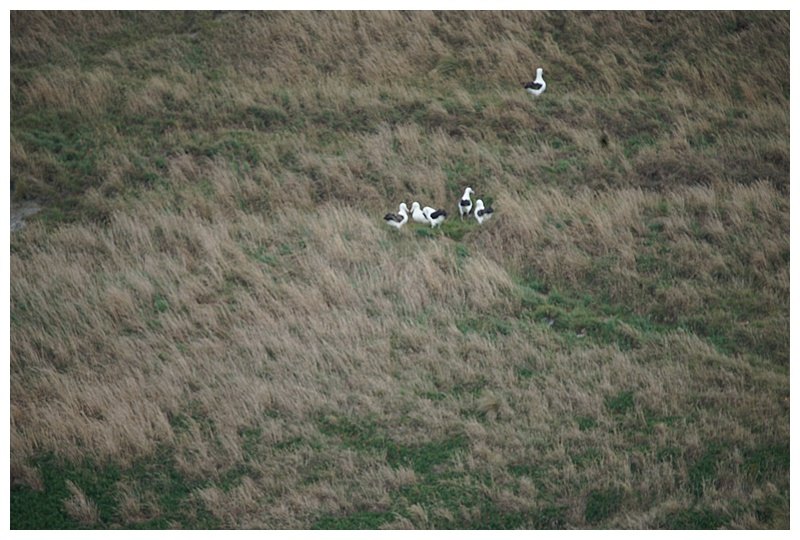
Just a few of the hundreds of Albatross on the hillside rookery
Below the rookery is a small penguin colony.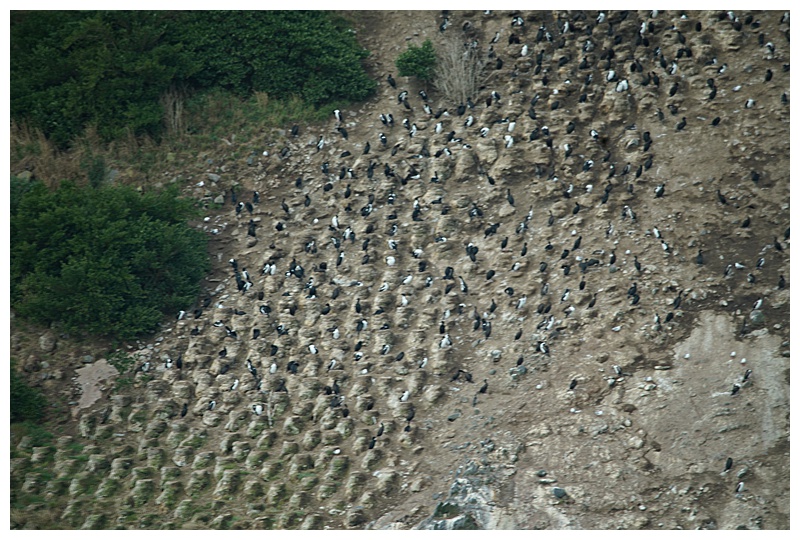
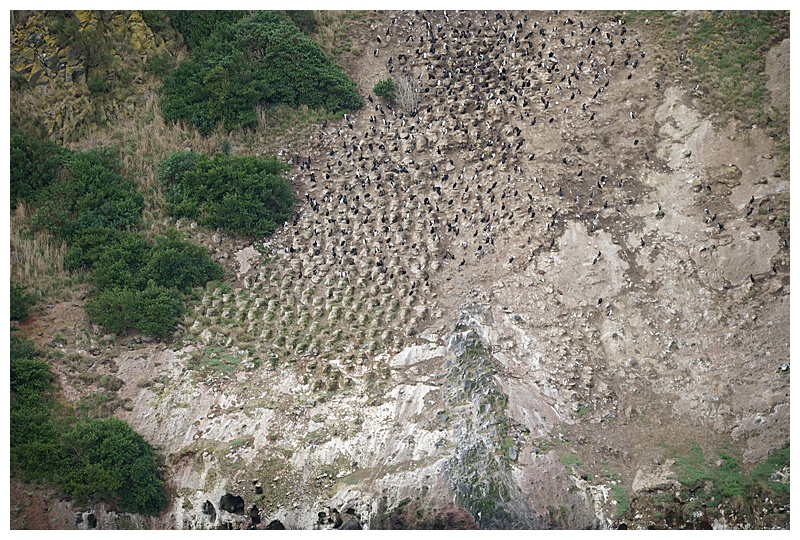
It is still rough outside and our overnight voyage to Fiordland (sic) National Park is bad; 50-knot winds and 4 metre (13 feet) swells and I have to reduce speed to reduce the violent pitching. Round the southern end of New Zealand, through the Forveaux Strait and thence north-west paralleling the coast, it is not until 1 a.m. that the seas begin to ease.
